Recently, I’ve been contemplating learning how to make laminated dough pastries such as the French Pain au Chocolat and Portuguese pastéis de nata, which has me wondering exactly what laminated dough is. In order to find some answers, I turned to the old WWW and a few of my favorite online pastry chefs…
The short answer is that laminated dough is a flakey pastry made by folding and rolling layers of fat – usually butter – and dough together. The result is pure deliciousness! In this article, we’ll explore what this means for non-pastry chefs like me, and how we can incorporate it into our own baking.
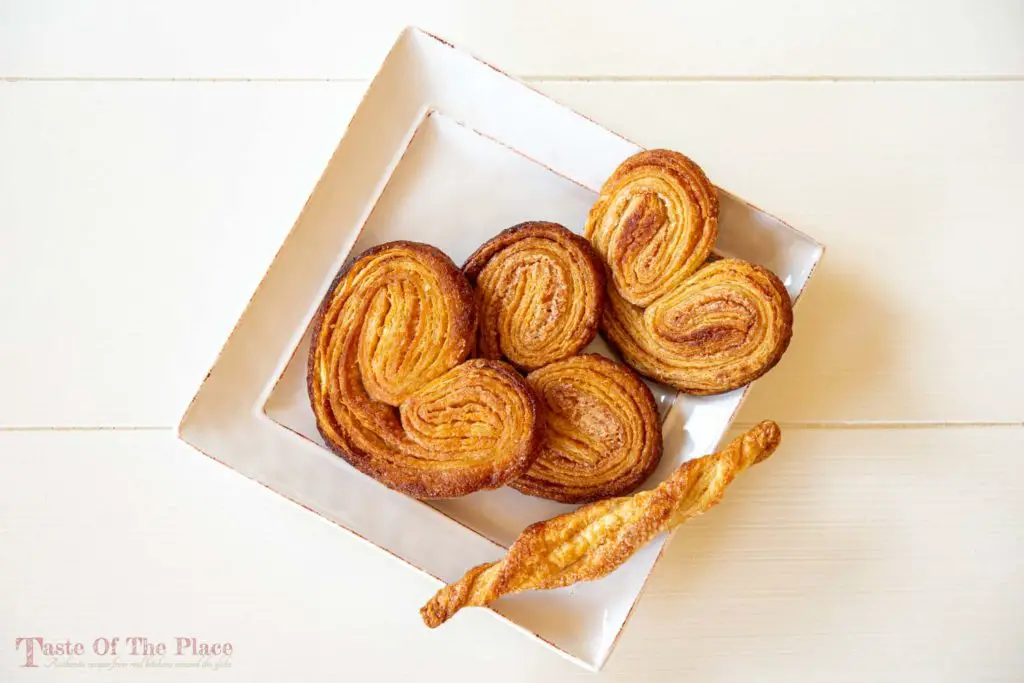
What makes a laminated dough so flakey when it’s baked?
That flakey dough is the result of the magic of steam! When a laminated dough is baked, all of those layers of butter sandwiched between layers of dough melt and create steam, which causes the dough to rise, forming layer upon delicious layer of flakey goodness.
What are some examples of laminated dough?
Laminated dough is actually pretty common. Croissants, made with a laminated dough containing yeast, are perhaps the most well-known example. Danishes and Kouign-Amann are also both examples of a yeasted laminated dough pastry. While palmiers and mille-feuille are examples of puff pastry (non-yeasted laminated dough).
What is the difference between laminated dough, puff pastry, and croissant dough?
Puff pastry and croissant dough are both types of laminated dough. But puff pastry and croissant dough are not the same things. While both are laminated, croissant dough contains yeast, giving it a softer and lighter texture, more like bread dough. Puff pastry tends to be more crispy and crackly.
Can I use store-bought frozen puff pastry in place of laminated dough?
Yes, but not always. Store-bought frozen puff pastry is a great option for a lot of recipes, especially when you want something flakey but don’t have time to make it from scratch. A few dishes that are perfect for store-bought puff pastry are pot pie lids, wrapping baked brie, and making cute twisty and flakey pastries like palmiers. Where store-bought puff pastry can’t be used is in place of yeasted laminated dough in applications like croissants or danishes.
Is it hard to make laminated dough?
Making laminated dough can indeed be very challenging and quite time-consuming. As a result, it is often tackled only by trained pastry chefs. But not every type of laminated dough requires a culinary degree and days of work. For those of us who simply love to bake from time to time, a simple flakey pastry, sometimes called rough puff pastry, can be very approachable and only takes a few hours from start to finish.
Check out the video I’ve attached below for French palmiers. It utilizes the most approachable type of laminated dough – rough puff pastry and makes for a great hands-on introduction to creating and baking with laminated dough.
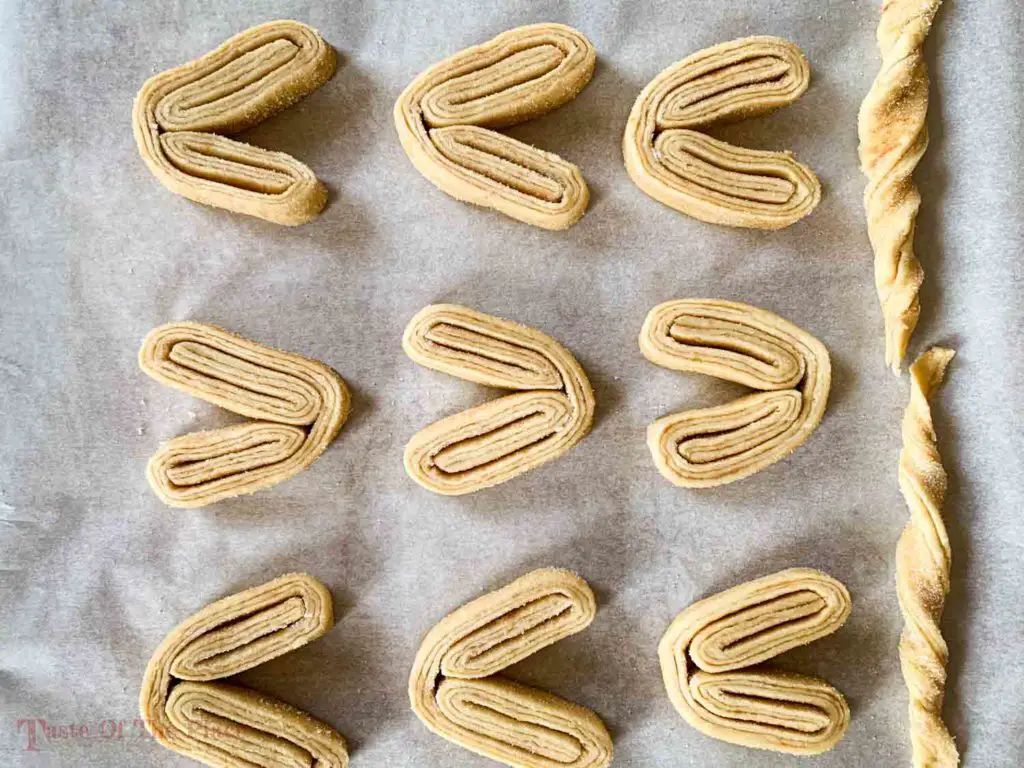
I recently had the joy of attending a hands-on workshop about making the famous Portuguese pastéis de nata from a woman who learned the recipe from her grandmother, who in turn learned it from her mother. It is a heavenly egg custard in a divinely flakey, laminated dough shell. I will be sharing more about how to make this amazing pastry soon, but suffice it to say, the laminated dough (yep, another example of rough puff pastry) is quite approachable! I can’t wait to share it with you!
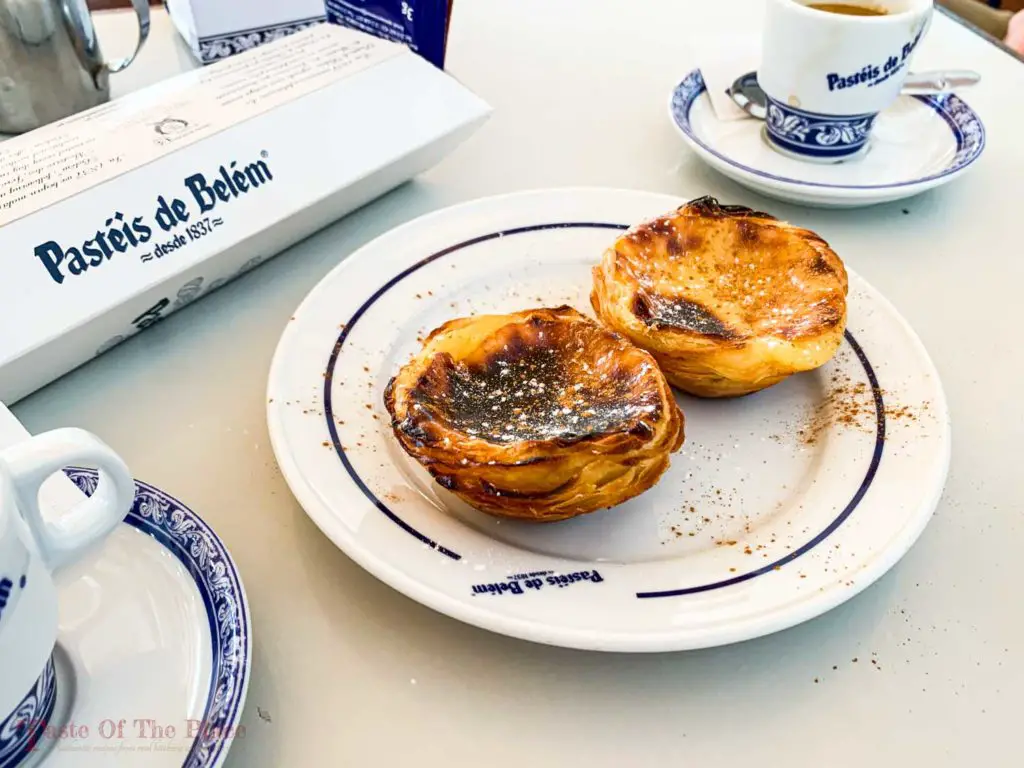
How do you laminate dough?
This is probably the real question you had when you came here – how do I make laminated dough? Well, I am just starting the laminated dough journey myself. Want to join me? I’ll be slowly working through different types of laminated dough, starting with the easiest versions and moving on to a few tricky ones as time and courage allow.
But for now, I don’t want to leave you hanging, so I’ve rounded up a lovely video for a classic French palmier made with a relatively easy rough puff pastry laminated dough. This video comes from the fine folks over at Crumbs And Doilies – the bakery associated with Cupcake Jemma – in London.
A note about butter if you try this recipe – if you are in the US, you may not know that US-style butter is different than European-style butter – and it makes a difference! Butter throughout Europe has a higher fat percentage (82% milk fat) than most butter in the US with 80% milk fat. A 2% difference might not seem like much, but the experts I’ve been studying are adamant that the additional fat really makes an impact. So to ensure the best success when making any kind of laminated dough, try to source European-style butter with at least 82% milk fat. Kerry Gold from Ireland is fairly common in US grocery stores and several US manufacturers also make European-style butter.
Alrighty! Hopefully, this has answered the question, “What is laminated dough?”, as well as given you an idea for how to use it and maybe even inspired you to give it a try! Look for more from me on laminated dough soon!
Happy baking,
Julie



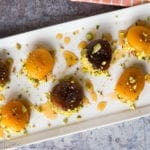
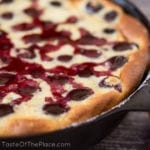






Leave a Reply